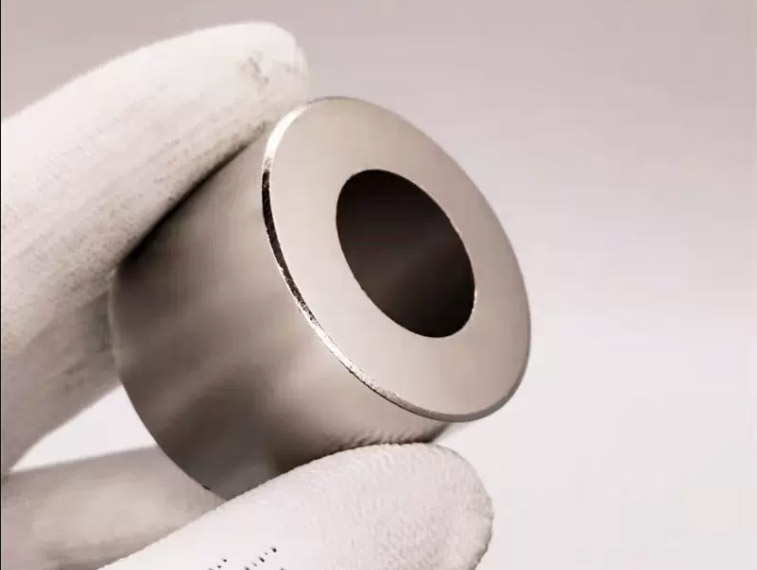As we all know, different grades of permanent magnets not only represent the magnitude of magnetic force, but also correspond to different temperature resistance levels. Common rare earth permanent magnets are NdFeB permanent magnets and SmCo permanent magnets, generally NdFeB is temperature resistant at 80-230 degrees, SmCo is temperature resistant at 250-350 degrees. A lot of electric motors or have temperature resistance requirements of the magnetic circuit design of friends may often need to pay attention to the magnet's temperature resistance performance is up to standard, due to the samarium cobalt temperature resistance is very mature, and neodymium cobalt grade is relatively more, here we mainly introduce the neodymium iron boron magnets of the temperature resistance experiments how to do.
First of all, we need to understand the concept of maximum working temperature. In the latest national standard "sintered NdFeB permanent magnetic materials" GB/T 13560-2017 document defined in the maximum operating temperature: thermal demagnetization state L/D = 0.7 permanent magnetic cylindrical samples (diameter D, height L), saturated magnetization, in the open-circuit state, heated from room temperature to a certain constant temperature insulation for 2h, and then cooled to room temperature, and its open-circuit flux irreversible flux loss ≤ 5% of the Maximum holding temperature.

In the definition, the length-to-diameter ratio L / D is a very critical factor, we have confirmed through experiments, the smaller the value of L / D, the smaller its maximum operating temperature, the larger the value of L / D, the larger its maximum operating temperature. For example, the diameter of 10 × 10 N35 cylinder, L / D = 1.0, its open circuit 80 degrees insulation 2 hours after the open-circuit flux loss is certainly less than 5%, while the diameter of 10 × 3 N35 cylinder, L / D = 0.3, its open circuit 80 degrees insulation 2 hours after the open-circuit flux loss may be greater than 20%.
But in practice, we have a lot of finished magnets (magnets) are not actually cylindrical, whether it is to do magnetic circuit components or permanent magnet motor friends, you ordered permanent magnet products may be square, tile, ring, or even other shaped, and different orientations, which where to L / D? So here comes another key point: the value of Pc. The larger the Pc the higher the working point of the magnet and the less likely it is to be demagnetized. In general for an isolated magnet orientation length is relatively large the larger the Pc is. Therefore, Pc is an important physical quantity in the design of a permanent magnet circuit. We can estimate the unit permeability (Pc) of an isolated magnet of a particular shape by using the principle of the equivalent magnetic charge sphere. We can calculate the Pc values for square, tile, and toroidal shapes using the appropriate formulas, compare the Pc values for cylindrical shapes, and equivalently band-change the corresponding L/D values. For example, a 30x25x12 square magnet, its Pc value of about 1.065, and D10 × 4 cylindrical magnet Pc value of 1.073 close to, therefore, you can see this square as L / D = 0.4 cylindrical, to help determine whether it can handle the corresponding operating temperature.
Having understood the basic concepts of the aspect ratio L/D and the unit permeability (Pc) of an isolated magnet, we will now specify how to perform temperature resistance experiments on magnets.
First, the magnet needs to be saturated and magnetized and the starting flux value Φ1 measured using a suitable fluxmeter.
Then, the magnet is placed in a high-temperature test chamber at a set temperature and held for 2 hours. Note: Generally, we measure the open circuit, that is, the magnet is not adsorbed on any magnetically conductive material in an isolated state; there are also measurements of semi-open circuit, that is, 1 measurement of the orientation surface adsorbed on the top of a 3mm iron plate.
After the magnet has been baked at high temperature and returned to room temperature, the flux value Φ2 is measured again under the same conditions.
Calculate the demagnetization rate = (Φ1 - Φ2)/Φ1*100%
The above is about how to do the neodymium magnet temperature resistance test, later will introduce how to judge the magnetic performance grade through the sample, welcome to pay attention.
Introduction of neodymium magnet temperature resistance range;
 China Neodymium And Ferrite Magnets Manufacturer & Supplier
China Neodymium And Ferrite Magnets Manufacturer & Supplier 


